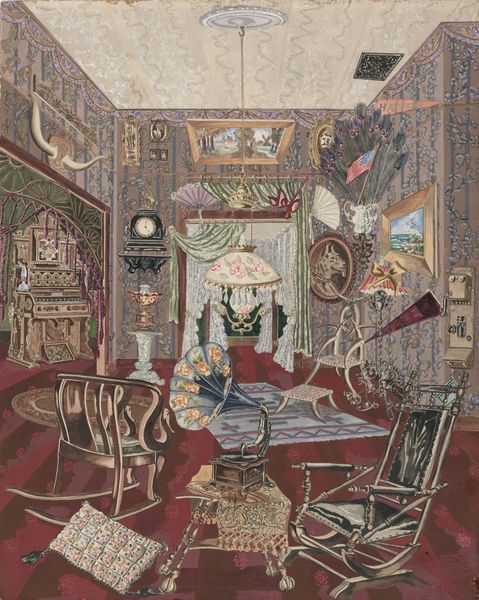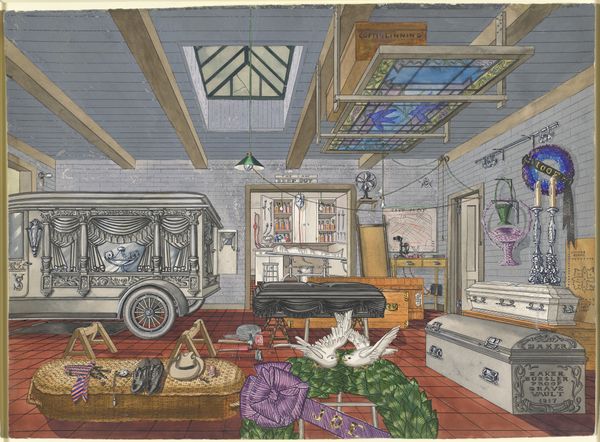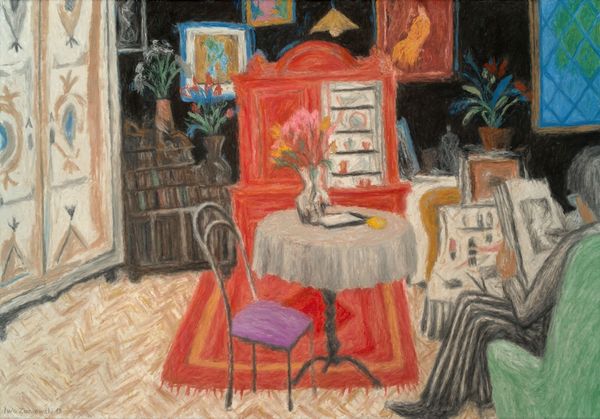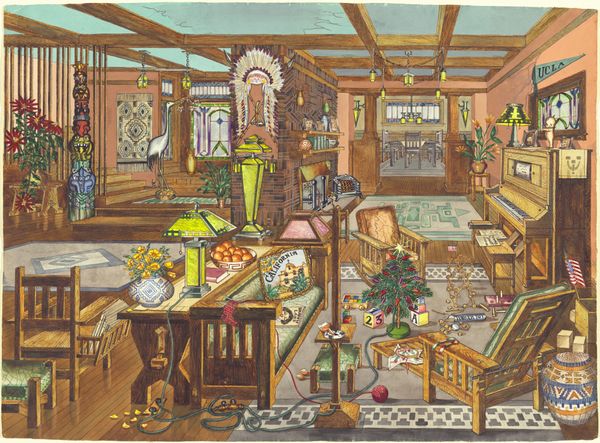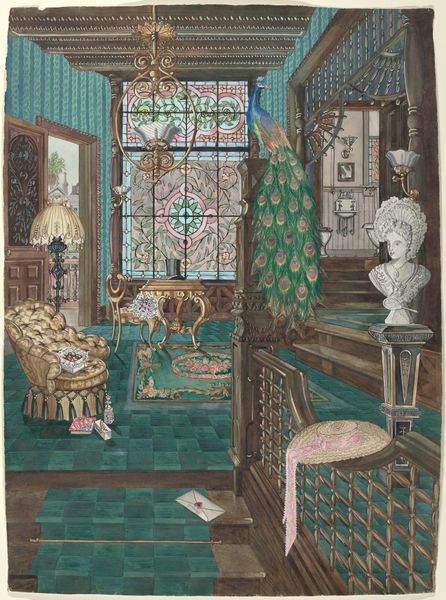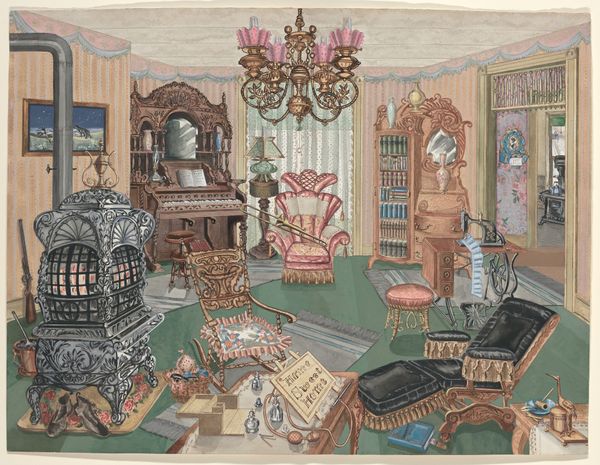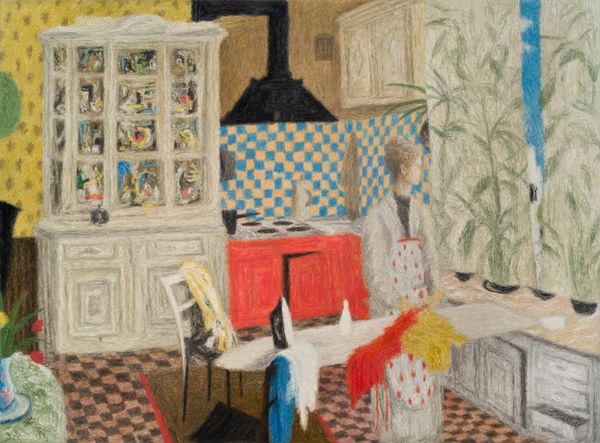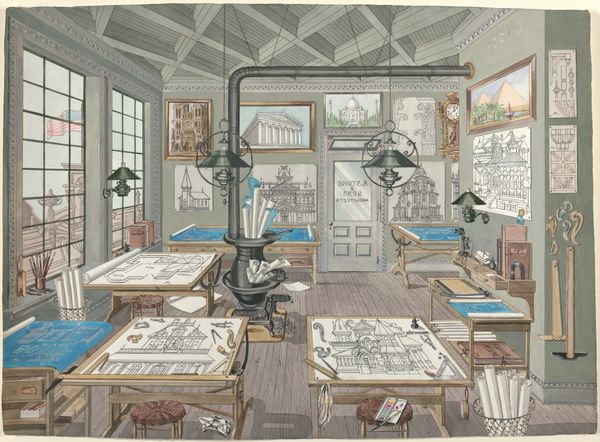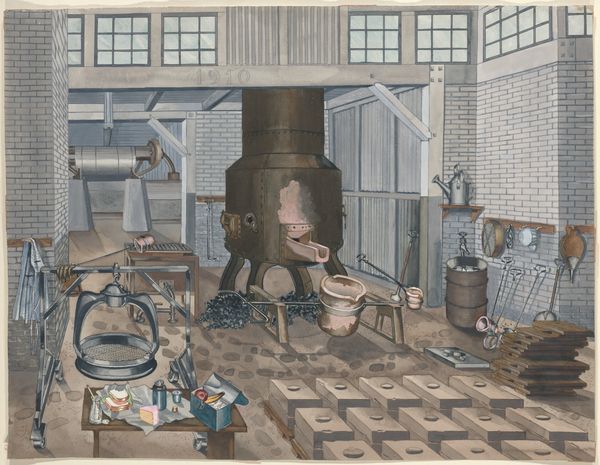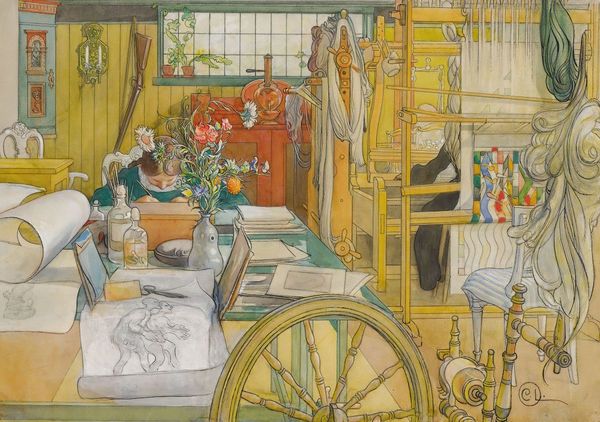
drawing, mixed-media, watercolor
#
drawing
#
mixed-media
#
water colours
#
watercolor
#
cityscape
#
genre-painting
#
mixed media
#
modernism
#
realism
Dimensions: overall: 66.9 x 51.1 cm (26 5/16 x 20 1/8 in.)
Copyright: National Gallery of Art: CC0 1.0
Curator: This mixed media piece, principally watercolor, is titled "Print Shop, 1870" by Perkins Harnly and was likely created sometime between 1935 and 1942. It really pulls you into a moment in time, doesn’t it? Editor: Absolutely, it has a strangely captivating stillness about it. The machinery dominates, heavy and immobile, almost like industrial relics already. And that soft, almost faded palette lends it a sepia-toned nostalgia. Curator: The historical framing is important here. Harnly's work frequently explores historical settings. This depiction, though created much later, allows us to consider the cultural role of print shops in disseminating information and shaping public opinion during that period, especially regarding socio-political movements. The sign “The Tyrants Foe The People’s Friend” gives insight on which "side" this print shop falls. Editor: Yes, it speaks to a very specific kind of craft-based labor, all those presses and tools – each designed for a precise task in replicating information. You can almost feel the weight of the metal and the meticulous handwork involved. Notice the division of space – how one side of the composition holds equipment dedicated to smaller-scale tasks versus the immense press that appears ready to handle mass production. It says so much about materiality. Curator: And I wonder who populated this space? The ghost of workers haunts every press and inkwell, anonymous figures operating within the mechanics of print culture, influenced, in turn, by those presses they so meticulously manage. Look at the small details—a lone teacup suggests long, demanding hours. Editor: True. I’m struck by the interplay of light, too—how it reveals and obscures areas in the shop. That lamp hanging prominently directs focus, casting shadows that both soften and sharpen the industrial objects, underscoring the manual processes behind them. What gets lit and how, emphasizes human skill in making. Curator: Exactly. And in the period Harnly made this image, between the Depression and WWII, there was a very deliberate and popular wave of interest in documenting American culture through realism. Genre paintings like this became crucial records and forms of social commentary on small businesses and manufacturing. Editor: It brings up a tension inherent in the process—mass communication enabled by intensive handwork and physical materials, all subject to capitalist forces. Even the watercolours here show the artist’s work in representing industrial processes. Curator: I think this piece asks us to reflect on the nature of progress and information. How are these presses influencing American cultural identity and the individual identities and well-being of the labor force? Editor: And how is that different today with the increasing removal of manufacturing by machines? These presses feel quaint and charming to our modern sensibilities. Thanks for the history lesson. Curator: A great point. And thanks for considering the physical and conceptual elements that shaped their making.
Comments
No comments
Be the first to comment and join the conversation on the ultimate creative platform.
